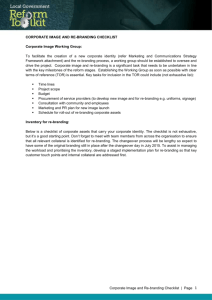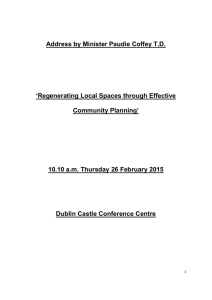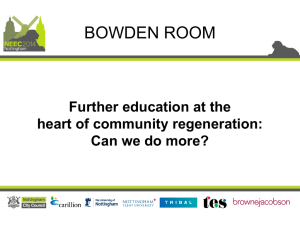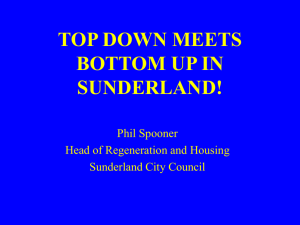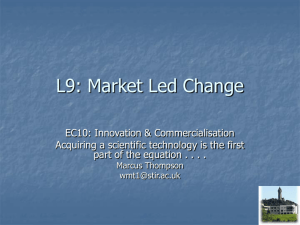Exam practice answers 6
advertisement
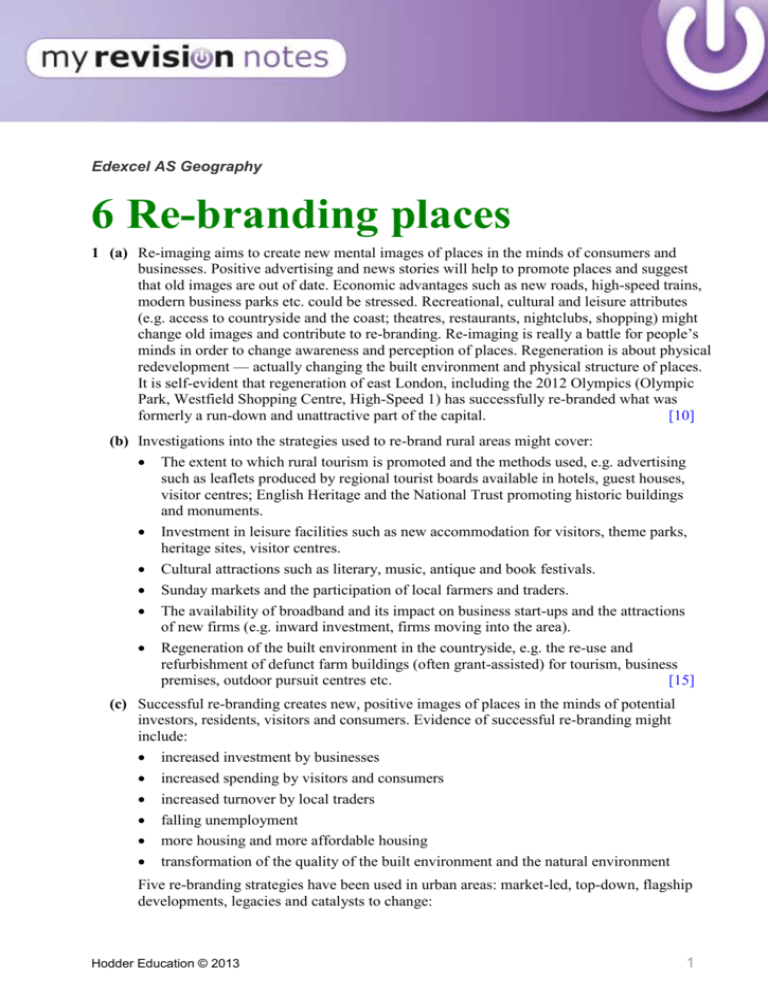
Edexcel AS Geography 6 Re-branding places 1 (a) Re-imaging aims to create new mental images of places in the minds of consumers and businesses. Positive advertising and news stories will help to promote places and suggest that old images are out of date. Economic advantages such as new roads, high-speed trains, modern business parks etc. could be stressed. Recreational, cultural and leisure attributes (e.g. access to countryside and the coast; theatres, restaurants, nightclubs, shopping) might change old images and contribute to re-branding. Re-imaging is really a battle for people’s minds in order to change awareness and perception of places. Regeneration is about physical redevelopment — actually changing the built environment and physical structure of places. It is self-evident that regeneration of east London, including the 2012 Olympics (Olympic Park, Westfield Shopping Centre, High-Speed 1) has successfully re-branded what was formerly a run-down and unattractive part of the capital. [10] (b) Investigations into the strategies used to re-brand rural areas might cover: The extent to which rural tourism is promoted and the methods used, e.g. advertising such as leaflets produced by regional tourist boards available in hotels, guest houses, visitor centres; English Heritage and the National Trust promoting historic buildings and monuments. Investment in leisure facilities such as new accommodation for visitors, theme parks, heritage sites, visitor centres. Cultural attractions such as literary, music, antique and book festivals. Sunday markets and the participation of local farmers and traders. The availability of broadband and its impact on business start-ups and the attractions of new firms (e.g. inward investment, firms moving into the area). Regeneration of the built environment in the countryside, e.g. the re-use and refurbishment of defunct farm buildings (often grant-assisted) for tourism, business premises, outdoor pursuit centres etc. [15] (c) Successful re-branding creates new, positive images of places in the minds of potential investors, residents, visitors and consumers. Evidence of successful re-branding might include: increased investment by businesses increased spending by visitors and consumers increased turnover by local traders falling unemployment more housing and more affordable housing transformation of the quality of the built environment and the natural environment Five re-branding strategies have been used in urban areas: market-led, top-down, flagship developments, legacies and catalysts to change: Hodder Education © 2013 1 Market-led developments have often successfully re-branded city neighbourhoods. Examples include the transformation (gentrification) of inner London districts such as Notting Hill, Islington, Clapham, and more recently, Tooting. Top-down strategies, dominated by planning and the public sector, have often been less successful (e.g. new towns, inner-city regeneration projects such as Newcastle’s Byker Wall). Flagship projects such as Liverpool’s Albert Dock and Hull’s Aquarium (‘The Deep’) have helped to re-brand run-down and derelict dockside locations, stimulating visitation, but others such as Morecambe’s refurbished Midland Hotel and Rotterham’s Magna Museum appears to have had little impact beyond the local area. Legacies from international sporting events such as the 2002 Commonwealth Games and the 2012 London Olympics have successfully re-branded extensive areas of the inner city. Glasgow, chosen as the venue for the 2014 Commonwealth Games might expect a similar rich legacy. Catalysts, include being chosen as a European City of Culture (e.g. Liverpool) or a National Garden Festival (1990–95). While the former has contributed significantly to re-branding Liverpool, the latter was more short-term, smaller scale (national rather than international) and quickly forgotten. [10] Hodder Education © 2013 2
